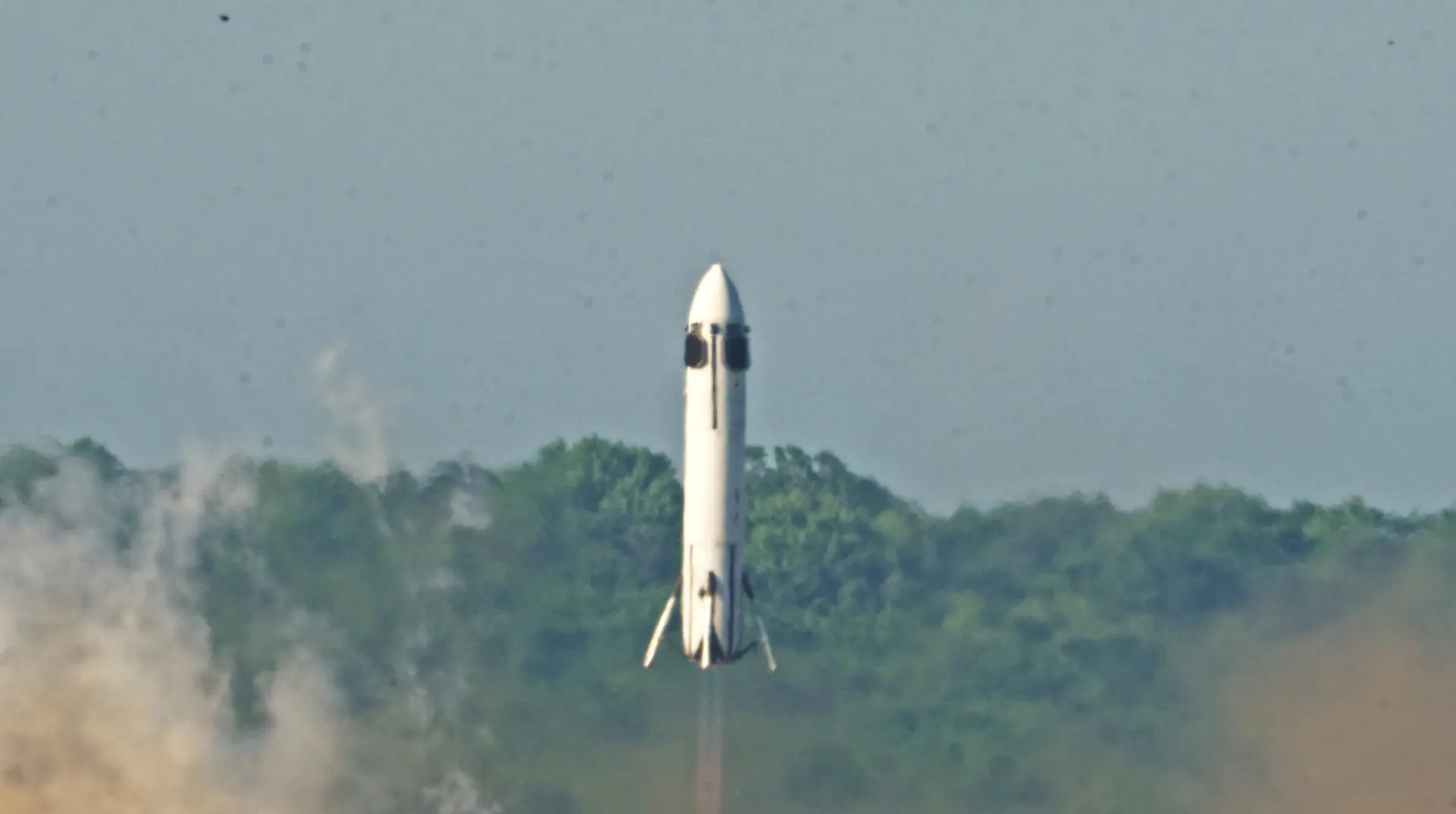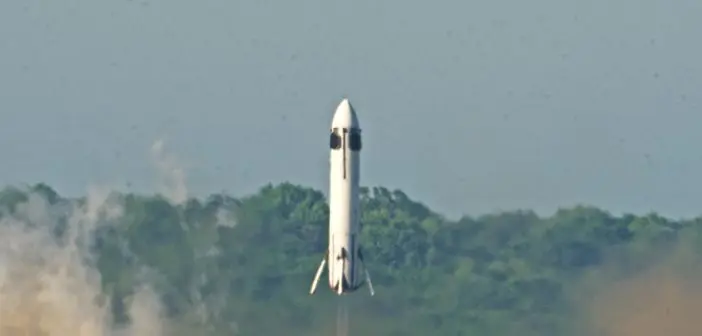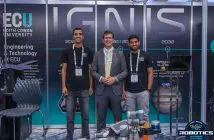
Japanese automotive giant Honda pulled off an unexpected but successful rocket launch test this week in Hokkaido Prefecture. The June 17 test launch and landing, Honda’s first, went off without a hitch. The company says it was a test run of key technologies needed to operate a reusable rocket program.
Earlier this year, Space & Defense reported that Honda wanted to increase its involvement in space. The company had identified in-house strengths in engines, robotics, and aerospace. It sees an opportunity to carry these over to the space sector.
This week’s rocket stood 6.3 metres tall and was 85 centimetres in diameter. It had a 1,312-kilogram wet weight and a 900-kilogram dry weight. Honda says it reached an altitude of 271.4 metres, and its engineers landed it within 37 centimetres of the target touchdown point. All up, it was in the air for slightly less than one minute.
“We believe that rocket research is a meaningful endeavour that leverages Honda’s technological strengths,” said Honda Global CEO Toshihiro Mibe. “Honda has chosen to take on the technological challenge of developing reusable rockets by utilising Honda technologies amassed in the development of various products and automated driving systems.”
Steady progress on rocket’s development
Honda says its rocket research is still in the research phase. However, since last year, it has been conducting engine combustion and hovering tests. This week’s test allowed it to demonstrate the rocket’s stability during ascent and descent, among other outcomes. Like all rocket companies, every second the rocket is in the air represents a data collection opportunity.
Honda’s involvement in the space sector dates back to 2021. Aside from reusable rocket technologies, the company is doing work on robotic technologies for use in space. It is now also doing work on circulative renewable energy systems in space.
As long as four years ago, Honda made it known that its engineers were test-firing prototype rocket engines. However, the company has always been very coy about the it. Honda has declined to discuss specifics such as propellant mix or anticipated thrust. The hardware used in this week’s successful rocket launch test is too small to go into space. But if Honda’s technologies work, they can be transferred onto larger, more powerful rockets.
Targeting suborbital spaceflight in 2029
The company wants to conduct a suborbital spaceflight in 2029. Eventually, it wants to build a satellite launch vehicle that will push around 100 kilometres into space. It sees this week’s test as a significant step towards that goal.
The company says no decision has been made about commercialising its rocket technologies. Meanwhile, the Japanese Government wants to double the value of Japan’s space sector to over USD55 billion early next decade. It has poured billions of dollars into a space venture fund that private companies like Honda can tap.
Honda says launching satellites with its rockets could lead to services compatible with other Honda businesses. It says there is a growing reliance on data and satellite communications. The company expects the demand for satellite launch services to continue increasing. Toshihiro called the rocket program a new challenge. But he says getting it up and running will benefit customers and create value for the business in the long run.





